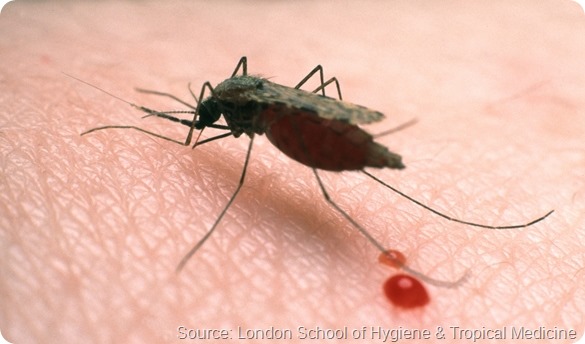Malaria, a mosquito-borne disease, infects more than 300 million people each year.
Cooler highland regions have historically provided havens from malaria, but it has been predicted that the disease could be especially sensitive to climate change, since both the Plasmodium parasites that cause it and the Anopheles mosquitoes that spread it thrive at warm temperatures.
The potential impact of global warming on the worldwide incidence of malaria has been debated for more than two decades.

A recent analysis conducted by the London School of Hygiene & Tropical Medicine and the University of Michigan, provided the first hard evidence that malaria is indeed present at higher elevations during warmer years and restricted to lower altitudes when temperatures cool.
The study reviewed malaria case records from highland regions of Ethiopia (Debre Zeit area of central Ethiopia; 1993 to 2005) and Colombia (Antioquia region of western Colombia; 1990 to 2005) to determine how the spatial distribution of malaria cases changed in response to year-to-year temperature variations.
After excluding other variables that influence malaria case numbers, such as mosquito-control programs, resistance to anti-malarial drugs and fluctuations in rainfall, it was shown that the median altitude of malaria cases was higher during warmer years and lower in cooler years.
These data suggest that future climate warming will result in a significant increase in malaria cases in the densely populated highland regions of East Africa and South America, unless disease monitoring and control efforts are boosted and sustained.
Menno Bouma, Honorary Senior Clinical Lecturer at the London School of Hygiene & Tropical Medicine, said: “Traditionally, we think of malaria as a disease with limited prevalence in highland regions, but we are now seeing a shift due to climate change. Our latest research suggests that with progressive global warming, malaria will creep up the mountains and spread to new high-altitude areas. And because these populations lack protective immunity, they will be particularly vulnerable for severe morbidity and mortality.”
“This is indisputable evidence of a climate effect,” said Mercedes Pascual from the University of Michigan. “Our findings here underscore the size of the problem and emphasize the need for sustained intervention efforts in these regions, especially in Africa.”
Such analysis needs to be replicated in highland regions of more malarial countries before general trends can be assumed.
Sources:
A. S. Siraj, M. Santos-Vega, M. J. Bouma, D. Yadeta, D. Ruiz Carrascal, M. Pascual. Altitudinal Changes in Malaria Incidence in Highlands of Ethiopia and Colombia. Science. DOI: 10.1126/science.1244325 - http://www.sciencemag.org/lookup/doi/10.1126/science.1244325
The London School of Hygiene & Tropical Medicine - www.lshtm.ac.uk